Why you can trust Tom's Hardware
The easiest way to enjoy the AW2725Q is to leave it in its default Standard mode. It exhibits near-perfect color and grayscale performance, but has light gamma tracking. For options, there are Creator and Custom Color modes, which I’ll tell you about now.
Grayscale and Gamma Tracking
Our grayscale and gamma tests use Calman calibration software from Portrait Displays. We describe our grayscale and gamma tests in detail here.
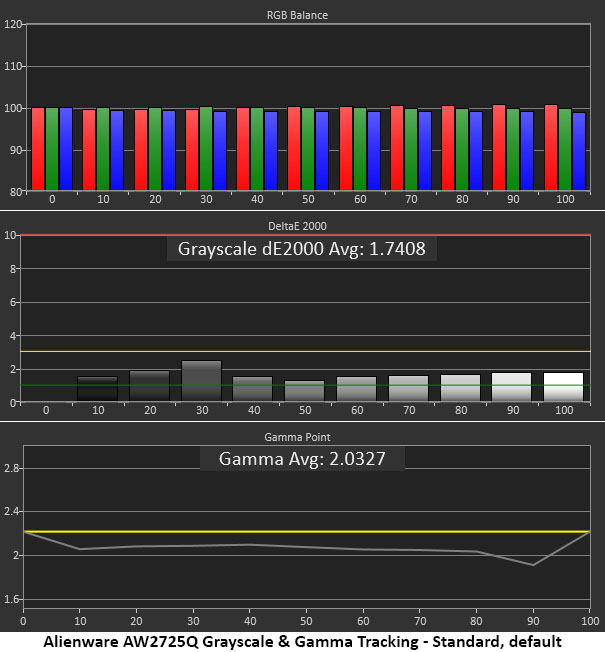
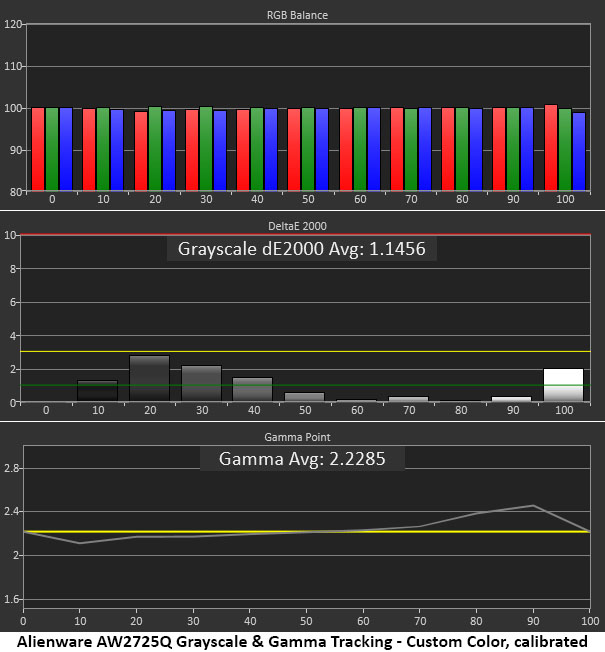

The only issue with the AW2725Q’s default chart is light gamma tracking. The values are at least consistent, but this result makes the picture look slightly less impressive than a screen with 2.2 gamma. It’s more obvious in a side-by-side comparison. I wish there were gamma presets available in Standard mode because that would make this a simple fix.
In Custom Color mode, you get RGB gain and offset sliders that let you dial in slightly better grayscale tracking. This gain alone isn’t significant, but the improvement to gamma is. There aren’t any presets but this mode tracks closer to 2.2 with only a hump at 80 and 90% that slightly mutes the brightest highlights. The picture is overall much better.
If you want sRGB, pick the Creator mode with its selectable gamuts. Its grayscale is nearly perfect, but the gamma is quite light. Luckily, you can fix this by turning gamma up to 2.4. I’ve shown the
Comparisons
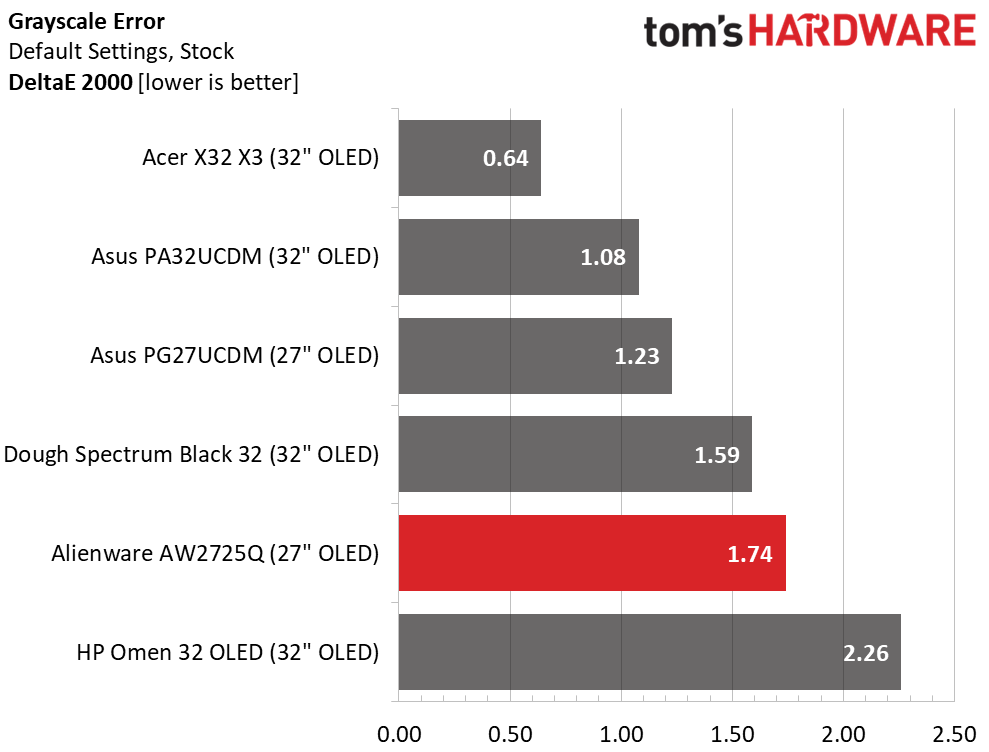
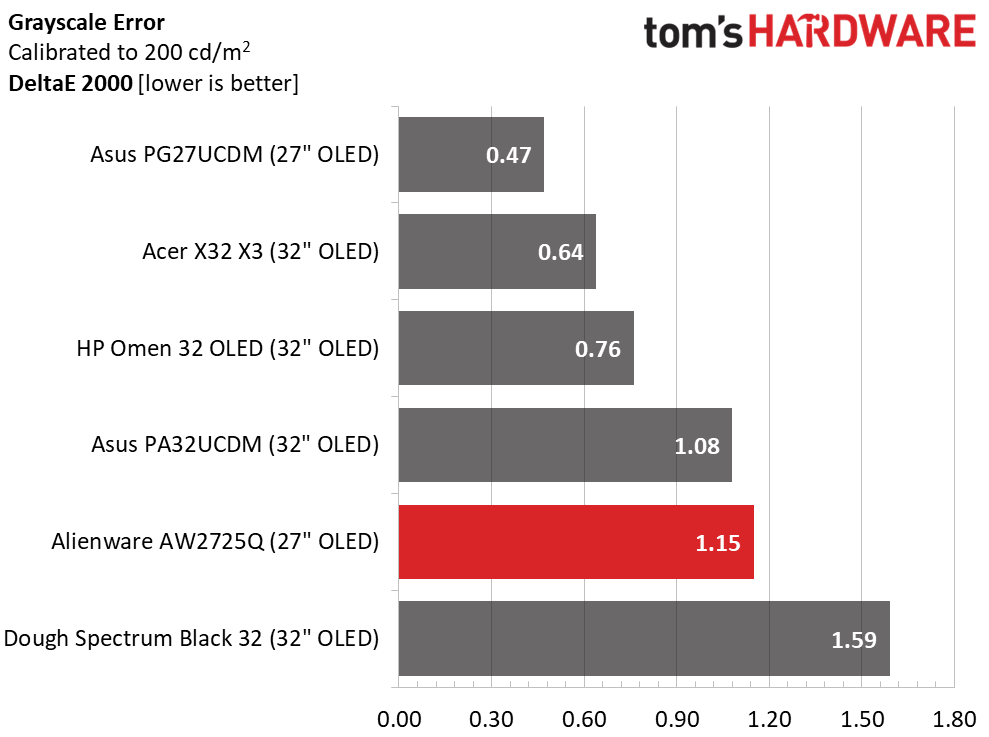
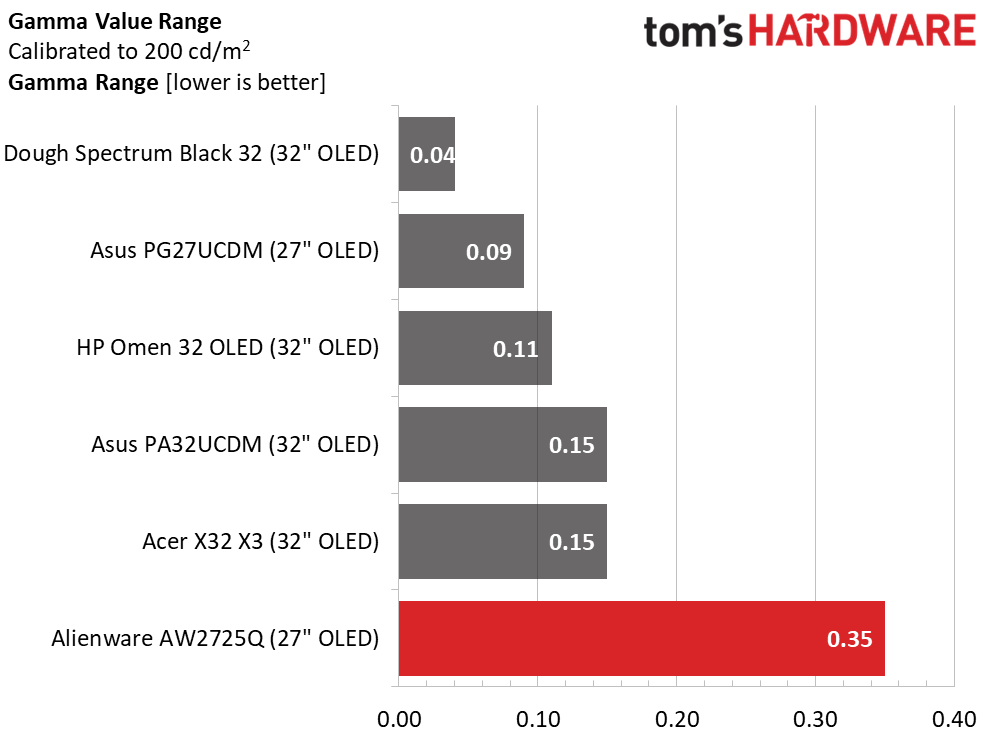

Nearly all the OLEDs I’ve reviewed can be used sans calibration and the AW2725Q is no exception. A 1.74dE result is well within the realm of visually perfect. My only reason for going with Custom Color is gamma. That is visibly better, so it’s worth tweaking the RGB sliders too for even better grayscale tracking.
Gamma is the metric that most affects perceived contrast, so getting that closer to 2.2 means greater image depth and dimension. The AW2725Q performs best in its Custom Color mode where it misses 2.2 by just 1.36%, a decent result. The range of values is tight except for the rise at 80 and 90% brightness which I noted earlier. This is solid performance.
Color Gamut Accuracy
Our color gamut and volume testing use Portrait Displays’ Calman software. For details on our color gamut testing and volume calculations, click here.
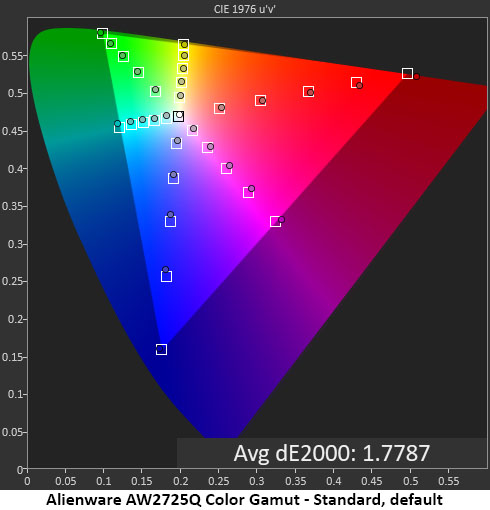
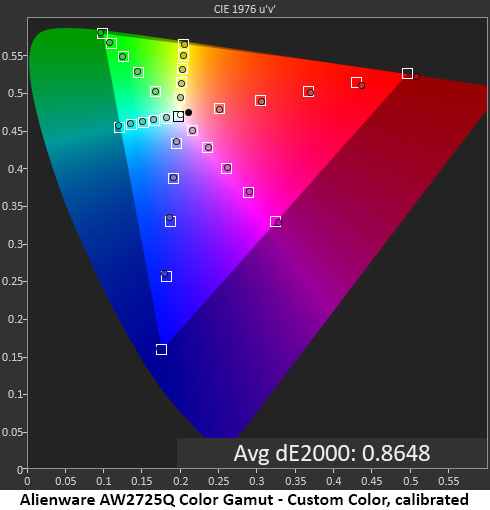
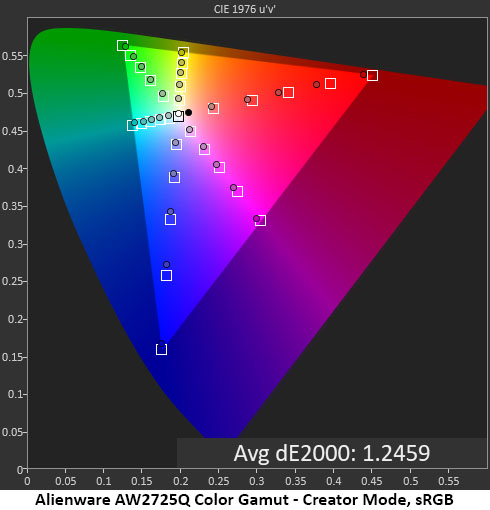
The AW2725Q’s color gamut result is nearly spot-on out of the box. The gamut is a bit wider than DCI-P3 but consistently so, which means nothing looks overblown or cartoonish. There’s just a little bonus red but not enough to be an issue. Calibration in Custom Color mode improves cyan and magenta hue tracking to perfection, but the visual difference is subtle. This is excellent performance.
In Creator mode, you get a solid rendering of sRGB with a slightly undersaturated red primary. The error level is still well within the realm of critical applications. If you choose DCI-P3 in that mode, you get the cinema spec with a 2.6 gamma and D63 grayscale tracking, which looks a bit green but is the correct compensation for the xenon light source used in large venue projectors.
Comparisons
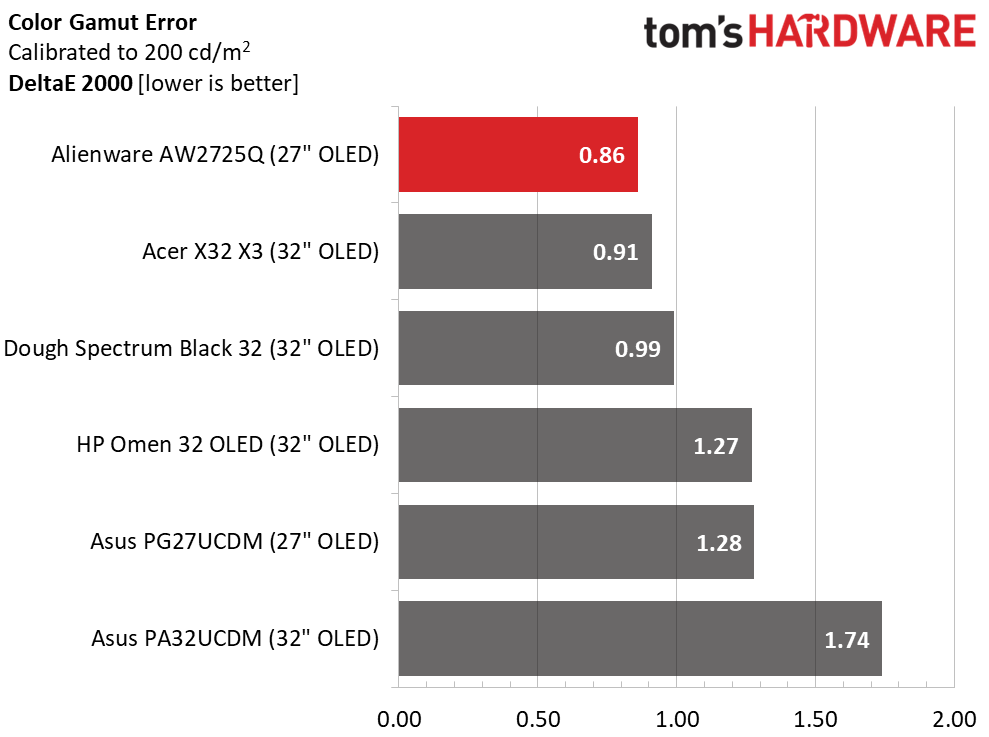
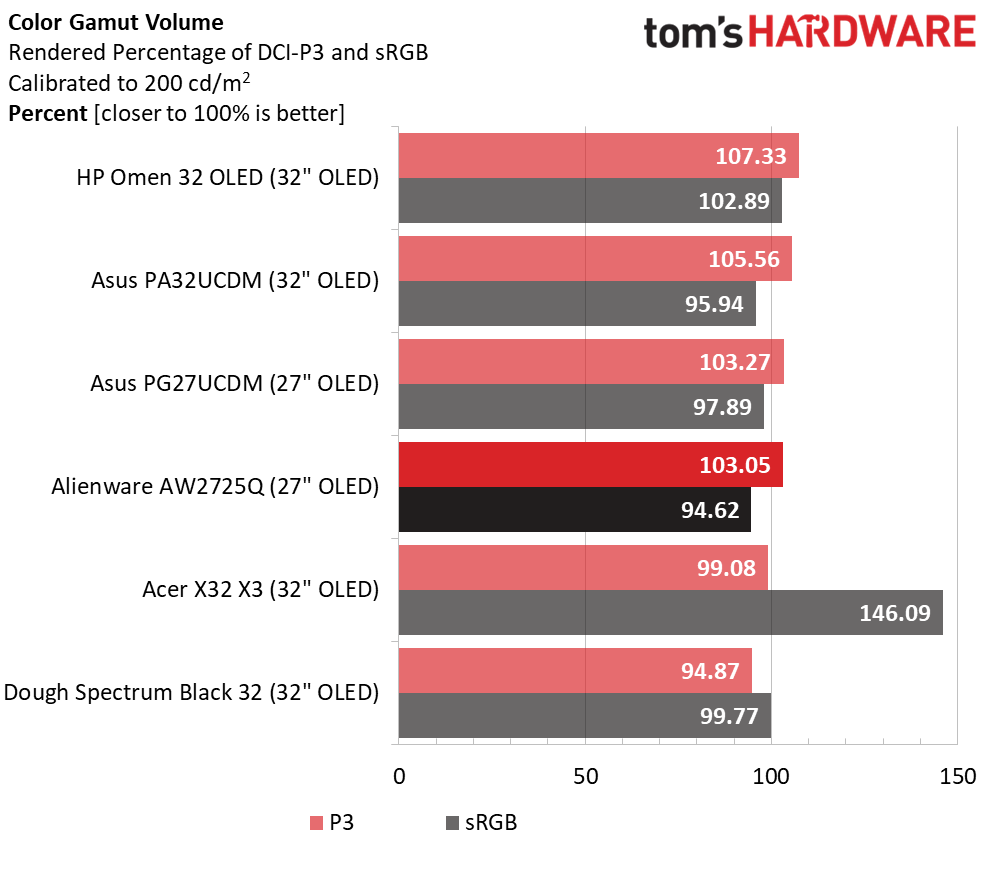
The AW2725Q’s calibrated color result is one of the best I’ve recorded at just 0.86dE. Not many monitors can get under 1dE but three of them are in this group, which is cool. Kudos to Alienware, Acer and Dough for color accuracy. This is reference-level performance.
In the volume test, the AW2725Q fares well with 103.05% coverage of DCI-P3. That puts it well past non-QD monitors, which are typically below 100%, but there are a few screens with more color like the HP Omen 32 OLED. While it’s hard to spot that extra 4%, it can be seen in side-by-side comparison, especially in the red part of the gamut triangle. These are small points and are by no means a deal-breaker.
Test Takeaway: The AW2725Q has very accurate color and can be used without calibration. But with a light default gamma curve, it’s best to opt for Custom Color mode and a few tweaks to the RGB sliders. The inclusion of Creator mode and its accurate sRGB gamut is also a plus. Color volume is comfortably above non-QD OLEDs but there are monitors with slightly more volume available.
MORE: Best Gaming Monitors
MORE: How We Test PC Monitors
MORE: How to Buy a PC Monitor
Current page: Grayscale, Gamma and Color
Prev Page Brightness and Contrast Next Page HDR Performance
Christian Eberle is a Contributing Editor for Tom's Hardware US. He's a veteran reviewer of A/V equipment, specializing in monitors. Christian began his obsession with tech when he built his first PC in 1991, a 286 running DOS 3.0 at a blazing 12MHz. In 2006, he undertook training from the Imaging Science Foundation in video calibration and testing and thus started a passion for precise imaging that persists to this day. He is also a professional musician with a degree from the New England Conservatory as a classical bassoonist which he used to good effect as a performer with the West Point Army Band from 1987 to 2013. He enjoys watching movies and listening to high-end audio in his custom-built home theater and can be seen riding trails near his home on a race-ready ICE VTX recumbent trike. Christian enjoys the endless summer in Florida where he lives with his wife and Chihuahua and plays with orchestras around the state.
-
MoxNix Way too expensive for what's a relatively slow refresh rate these days. The Alienware 27 inch 360 Hz 1440p monitor is a far better value.Reply -
mihen For Oled, refresh isn't a question of if the panel can do it. It's a question if the cable can do it. It's a 2160p verse 1440p difference.Reply
